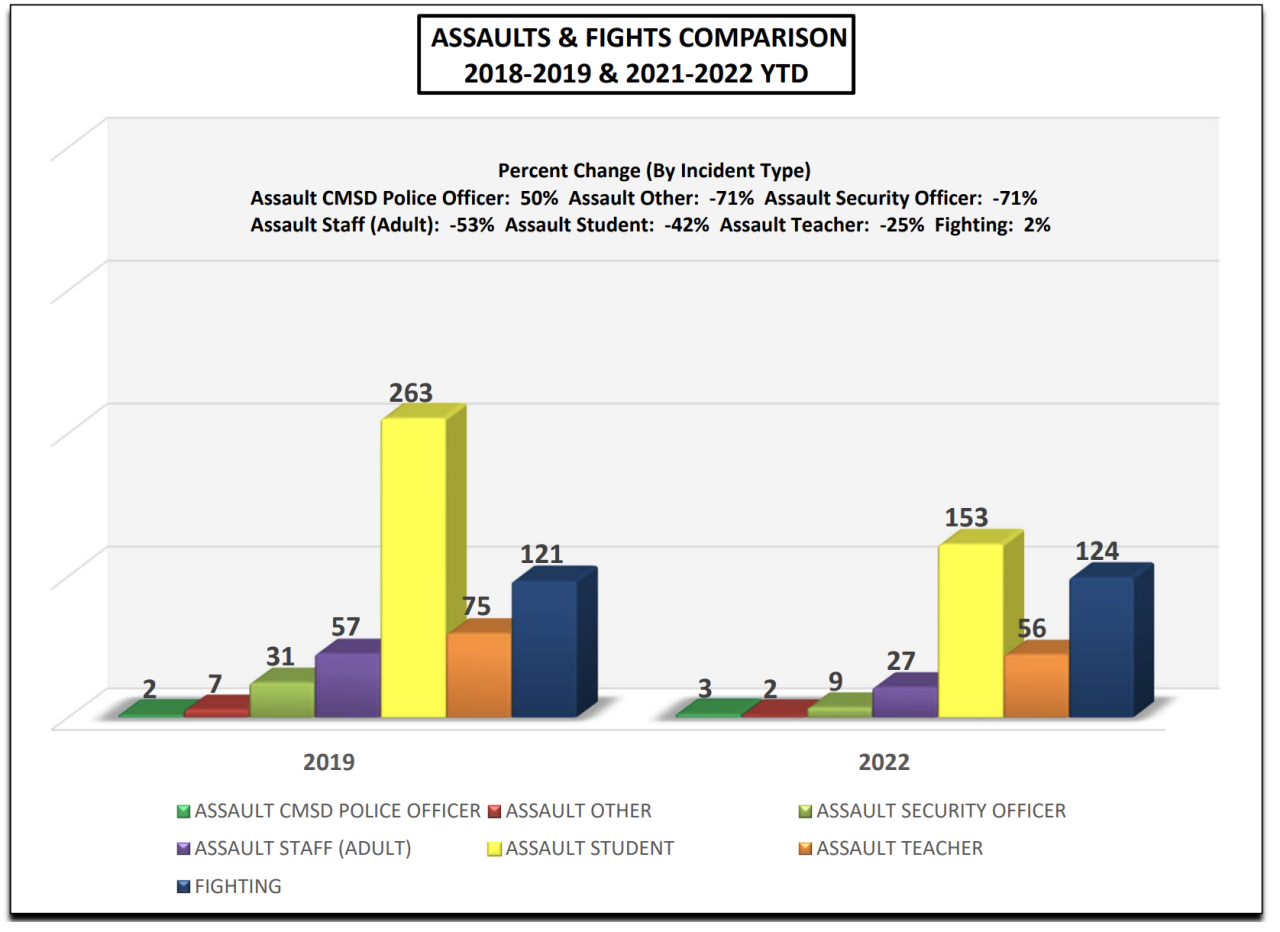CLEVELAND — The last few years have been traumatizing for all of us, in so many different ways.
But for students and teachers in Cleveland going back into schools — going back in person — that trauma has shown itself in ways and behaviors staff has never seen before.
“I teach 27 lovely little young people,” said a first-grade teacher at a Cleveland elementary school. We are concealing her identity for her safety.
Twenty-seven students, one teacher — back in person for their first full year.
“It’s hard to meet their needs, and they have so many more needs this year than they ever had before,” she said.
She has been assaulted; bruises cover her belly, made by small but determined fists.
“Complete loss of emotional control, throwing chairs, and flipping desks,” she said, describing a challenging and chaotic year for both students and staff.
In her sixth year of teaching, she said she has seen behaviors she’s never experienced before.
“Just a lot more violence, a lot more pushing and hitting, and going from 0 to 60 really fast,” she said.
She is one of 56 Cleveland school teachers who has been assaulted in the 2021-22 school year.
Data from the district shows that is down 25 percent from 2019, when 75 teacher assaults were reported.

Student-on-student assaults appear to be down 42 percent post-pandemic; 153 reported this past school year.

Shari Obrenski is the president of the Cleveland Teachers Union. She believes policies on reporting assaults have changed, so these numbers don’t depict the entire picture.
“The reality of the situation is that we are still seeing severe behavior,” Obrenski said. “Whether it 50 in a year, or 500 in a year, or 5 in a year - one is too many.”
Bill Stencil, a psychologist at the Cleveland Metropolitan School District, has been there 33 years. He said the change in routine coupled with the trauma of the pandemic has been a learning experience in terms of behavior — and responses — for everyone.
“It all boils down to relationships, and the stronger the relationships between staff and students, student and staff, students and students, the more we can minimize the unrest,” Stencil said.
Stencil also leads the district’s “Humanware” program, which is their social-emotional learning program and was started after a school shooting at SuccessTech Academy in 2007.
The district plans to expand the program and social-emotional learning in all schools starting next year, along with having a Say Yes to Education family support specialist in every school. The majority are social workers and will help organize a wide range of services, including mental health services.
Obrenski said the need for mental health services in schools is critical — and made even greater post-COVID. Smaller class sizes and more counselors in schools would also help.
But, Obrenski adds, it’s not just the district alone that can help students move forward and provide what every student and every family needs.
With hunger issues, housing insecurity and violence in our neighborhoods, it takes community involvement and investment.
“The reality is that our kids bring things with them to school that we can’t solve at school,” Obrenski said.
But if there’s one thing we know of students and teachers, it’s that they are resilient.
And with summer stretching ahead, a challenging, chaotic year behind them, they are giving each other grace for the next school year.
“That’s my favorite part, that classroom community, seeing them support each other and grow and become these amazing little people,” the teacher said.






